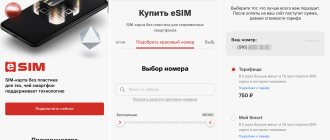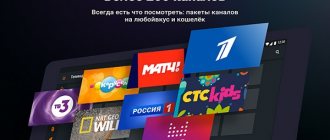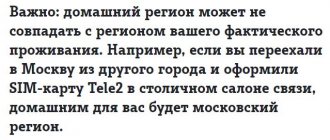Over the past six months, Russia has been actively discussing the implementation of eSIM technology. There is no doubt that soon all devices will support eSIM.
Tele2 has already started connecting Russian subscribers to eSIM, cleverly bypassing Russian legislation.
However, few people know what eSIM is, how it differs from a regular SIM card, and what devices and operators support eSIM. It's time to figure this out.
What are SIM and eSIM
The first mobile phones did not have a SIM card at all. Operators programmed phones before selling them to work on the desired network. Thus, all communication information was stored on the device, and users did not have the opportunity to quickly change the number and operator.
The concept of SIM card appeared in 1991 after the adoption of the corresponding standard. It was from this moment that phones began to have a connector for installing a SIM card.
What is a SIM card: it is a piece of plastic on which a microcircuit is applied. Over the years, only its size decreased, but the principle of operation remained the same.
SIM card sizes from left to right: miniSIM, microSIM, nanoSIM and eSIM chip.
What is an eSIM: this is a chip built into the gadget that emulates a SIM card. The phrase stands for embedded-SIM, that is, “built-in SIM card”.
With eSIM, operators no longer need to sell physical SIM cards. Instead, they sell a set of encrypted data that the customer enters on their device.
Need more than one eSIM?
If you travel a lot for business or pleasure and often have to switch between plans and carriers, you may want to store more than one eSIM on your iPhone. However, you can only use one at a time.
And remember that each eSIM requires its own unique data plan.
How to switch between eSIMs?
- Tap Settings > Cellular > Cellular
- Select the plan you want to use now
- Click Enable this line
Why eSIM is better than a regular SIM card
With eSIM, smartphone manufacturers do not have to design a SIM card slot, which takes up additional space. And if in phones this problem is insignificant due to the large size of the device, then in small gadgets free space is worth its weight in gold.
Since eSIM is just a set of data , users have the opportunity to quickly change SIM card and operator. You don't need to go to the store for this. Everything can be done online.
In the phone settings you just need to change the profile. This opportunity will be primarily appreciated by travelers.
In theory, multiple virtual SIM cards can be used on a device at the same time. However, for this, the smartphone must have more than one radio module.
Quickly change your cell phone plan
- Go to Settings > Cellular
- Tap Cellular Data
- Click on the number you want to use cellular data
- Switch to cellular data to automatically switch cellular data lines when you're on a call
When you enable cellular data and receive a voice call on your voice number, that number automatically switches to voice and data. This way you use both voice and data during a call.
If you turn off Allow Cellular Data Switching when you are using a voice number that is not your assigned cellular number, cellular data will not work while you are on that call.
Which iPhone, iPad and Apple Watch support eSIM
As often happens, eSIM began to be actively discussed after Apple introduced this technology into its devices. eSIM is currently supported by some Apple Watch, iPhone and iPad models.
iPhone:
■ iPhone XS ■ iPhone XS Max ■ iPhone XR
iPad:
■ iPad Pro 11 inches (2018) ■ iPad Pro 12.9 inches (2018) ■ iPad Air 3rd generation (2019) ■ iPad mini 5 (2019)
Apple Watch:
■ Series 3 ■ Series 4
In addition to eSIM, Apple also has its own SIM card. Apple SIM was introduced in 2014.
With Apple SIM, the user can change the operator and tariff at any time without having to replace the SIM card itself. Russian operators do not support Apple SIM.
How to Label Your Cell Lines
You'll be prompted to tag your plans after you've set up your second line, but if you want to change those labels later, you can always do so in Settings.
- Open Settings on your iPhone.
- Crane Cell .
- Click the number whose shortcut you want to change.
- Click on one of the ready-made labels in the list.
- Or tap Enter a label here under Custom shortcut .
- Enter your special shortcut .
How to use eSIM on a dual-SIM iPhone
iPhone XS, XS Max and XR support two SIM cards, one of which is an eSIM.
To set up eSIM, you need to scan the QR code, or download the operator’s application, which provides the ability to connect eSIM, or enter the data manually.
A virtual SIM card can act as the main one or be used as an additional one.
In iPhone settings you can also configure which number to use for each subscriber and which SIM card will be used for the Internet.
Impressions of eSIM at work
Considering the reviews of subscribers, we can conclude that a virtual SIM is no different in operation from a regular one. The operator provides the same opportunities and connects to any cellular tariff.
Attention! It is not possible to use the same number at the same time. You definitely need to switch between SIM cards.
To gain access to editing your profile, you must have a special QR code. It can be used up to 100 times. It is necessary to install a profile or restore it after deletion, as well as when transferring data from one device to another.
Expert opinion
Julia
I know the tariffs like the back of my hand
Some users claim that eSIM “eats” a lot of battery. However, this depends on the phone and its ability to hold a charge. It cannot be said that it is the virtual SIM card that consumes more resources and drains the device.
Which Russian operators support eSIM
According to current Russian legislation, using an eSIM is considered copying a SIM card . In Russia, such a procedure is prohibited, therefore operators cannot fully switch to eSIM.
However, some find various loopholes. For example, Tele2 offers to buy a regular SIM card along with a QR code. After entering the QR code, the physical SIM card is disabled, and the user has a virtual mobile number.
eSIM technology is currently being tested by the operator Drimsim. To be the first to try the new technology, you need to send a request by email. In response, you will receive a letter with information on setting up eSIM.
MegaFon, Beeline, MTS and other virtual operators do not yet offer eSIM in any form.
Unlike Russian companies, many European and American operators support eSIM. A list of all operators is on the Apple website.
Interview with Ilya Balashov
Ilya Balashov - co-founder of the virtual cellular operator MTX Connect
eSIM - is it an evolution or a revolution?
An evolution, and a very delayed one, which no one on the market expected or is expecting.
The classic plastic SIM card of the decade personified the connection between the operator and the subscriber. And operators are more than happy with this situation.
Will regular removable SIM cards become a relic in the medium term? Will eSIM supplant them?
No, they won't! The ecosystem is controlled by operators and they are less interested than all other participants (such as phone/device vendors, end users/subscribers, regulators, etc.) in eSIM becoming widespread.
Currently, only one phone manufacturer produces and sells eSIM devices across all of its sales channels as a primary product for the masses - and that's Apple!
All other devices (Microsoft with Surface Table, Google with Pixel, Samsung with Fold) are niche products that are either not sold through operators at all, or sales volumes are very small.
Apple is the only company on the market that not only has its own vision of the product, but also sufficient market power to tell operators: “If you don’t like phones with eSIM, you don’t have to sell them!”
In order for plastic SIM cards to stop occupying more than 90% of the market, not only support from other phone manufacturers is needed.
All vendors (except Apple) are very dependent in their sales channels on operators who tell all vendors - “We will not sell phones with eSIM for the mass market.”
Despite the fact that Russia (and almost the entire CIS) is an independent distribution market, operators in these regions have a great influence on it.
How much faster is “esimization” happening in the world than in Russia? Are we far behind?
No mobile operator in the world is interested in promoting eSIM, no matter what they publicly say about it.
Moreover, eSIM platform providers say that operators’ plans for the number of eSIM activations differ from actual use by tens of times!
According to various estimates, less than 5% of iPhones with eSIM support have downloaded at least one eSIM at least once during their lifetime.
Russia is lagging behind in that even government agencies cannot yet decide how to approach this phenomenon (eSIM)! This means that no one can take any further steps.
Countries in the Middle East, India and Asia introduced fairly strict eSIM regulations for operators, but they were clear from day one and operators could decide whether they wanted to follow them or not.
And in China, for example, they are testing their own eSIM ecosystem, which, although it will be similar to the one that exists throughout the world, will nevertheless be completely isolated from it. We think that in 2020-21, Chinese smartphones with support for the Chinese version of eSIM will arrive in Russia through AliExpress, and buyers will be disappointed in this technology due to complete incompatibility.
What new challenges are expected in the near future?
It is possible that additional market segmentation will soon emerge between companies that rely on long-term relationships with their subscribers and various eSIM sellers who, in fact, are competitors of SIM card points at airports.
In the case of SIM, the subscriber returns to the mobile operator again and again. Operators are not interested in selling an eSIM to a client and forgetting about it.
And it is very possible that there is a situation that currently exists in the market for selling disposable SIM cards for tourists (on Ebay, TaoBao, AliExpress) - when, under the guise of a 10GB package, they sell 4GB (and sometimes 1GB) first at full speed, and then, as they do do, without warning they reduce it to 128 kbit/s. And trust in the idea among ordinary people will fall!
What happens after eSIM?
Since we are at the very beginning of the development of the eSIM ecosystem, I think that in the next 5-7 years eSIM will develop, both from a technical and organizational point of view.
And talking about what will happen next is 100% fortune-telling or fantasies on a given topic.











